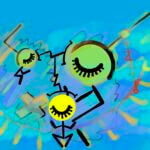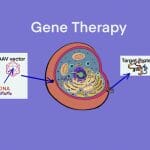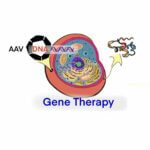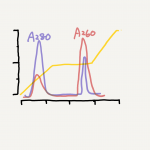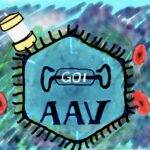はじめに
遺伝子治療用のウイルス・ベクターとしてAAVを使用した場合、目的通りに目的の遺伝子をAAVの殻にパッケージングできるとは限りません。導入する遺伝子の大きさが大きい程、その導入効率は低下してくると考えられます。実際に、動物細胞または昆虫細胞に対して、遺伝子導入試薬を使って目的の遺伝子を導入させ(トランスフェクション)、AAVベクターを作る時、目的遺伝が含まれないAAVも多数産生されます。
AAVはヒトにとって病原性が無く最もよく使われるウイルス・ベクターですが、ウイルスの殻は別です.殻を構成するたんぱく質などの抗原性が問題になるため、極力、目的遺伝子を含まないAAVベクター(Empty)については精製で除去すべきです。
目的遺伝子を含むAAVベクター(Full)との分離には、AAVベクターとしての等電点(pI)の違いを利用することが多く、陰イオン交換体を使用したカラムクロマトグラフィが使用できます。
なぜ、FullとEmptyとで、電荷が異なるかについては明確にはわかっていませんが、遺伝子であるDNAのパッケージの有無に関わることから、DNAのマイナス電荷の有無に関わるものと考えられます。完全にパッケージされているなら、その電荷がウイルスの殻の外に影響するとは考えにくいのですが、完全に否定することはできません。パッケージされることでウイルスの殻を構成していカプシドタンパク質のアミノ酸レベルで、プラスチャージのアミノ酸が殻の内側に向くこともあり得ます。その結果、殻の表面の電荷が変化することもあるでしょう。
また、完全にハッケージされる場合と全くされないという二極化をイメージしてはいけません。物理現象は、連続的なので、そのような短絡的なイメージではなく、途中の状態も存在することも考えてみましょう。例えば、殻が、完全な閉鎖形になっていなくて、例えば、映画「スターウォーズ」の「デススター」のように、表面が欠けている場合です。その欠け方も範囲の小さいものから大きいものまであると考えるべきです。そうすると、一部の遺伝子DNAが殻の隙間から飛び出ているAAV粒子もあることは想像できます
以上、多様な粒子としてAAVベクターが産生されており、その中からFullのみを分離精製することが、医薬品を作り上げていく上で、downstream; 精製工程における工業化の課題となる訳です。一方、upstream; 生産工程における工業化の課題は、パッケージング効率と産生量が工業化の課題となります。
ウイルスの等電点(pI or IEP)
以下,文献によるとウイルスの表面電荷は,およそ酸性から中性域にあります(2.1~8.3).平均値は,5.0±1.3です.ウイルス精製では,陰イオン交換体クロマトグラフィ(AEX)による吸着/溶出で可能です.等電点とは,環境pHに応じて電気的に中性となるpHを等電点(pI or IEP: isoelectric point)と言います.今回紹介する文献では,公開されているウイルスのIEPを再度検証しています.1938年以降に行われた104のウィルスのIEPのデータがまとめられています.
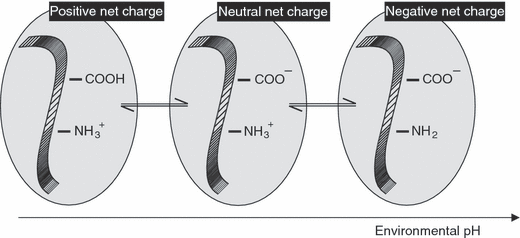
図1. タンパク質上のカルボキシル基とアミノ基の電荷の変化
環境のpHに応じて,カルボキシル基とアミノ基の電荷が変化する.
ウイルスの等電点の検証結果の詳細
表1. ウイルスのIEP
| Host kingdom | Virus species | Strain | IEP(s) | Method | Purity | Reference |
|---|---|---|---|---|---|---|
| Animalia | Adeno‐associated virus – 4 | Adeno‐associated virus – 4 | 2·6 | IEF‐DA | High | Salo and Mayor (1978) |
| Animalia | Alastrim | Butler | 3·4 | EM‐LM | High | Douglas et al. (1969) |
| Animalia | Cowpox | Brighton | 4·3 | EM‐LM | High | Douglas et al. (1969) |
| Animalia | Cowpox | Brighton (egg) | 4·3 | EM‐LM | High | Douglas et al. (1966) |
| Animalia | Cowpox | Brighton (rabit) | 4·3 | EM‐LM | High | Douglas et al. (1966) |
| Animalia | Cowpox | Kampen | 5·4 | IEF‐DA | Low | Mouillot and Netter (1977) |
| Animalia | Cowpox | Leuwarden | 5·2 | IEF‐DA | Low | Mouillot and Netter (1977) |
| Animalia | Encephalomyocarditis virus | Mengovirus L | 8·1 and 4·6 | IEF‐PA | High | Chlumecka et al. (1973) |
| Animalia | Encephalomyocarditis virus | Mengovirus M | 4·4 and 6·3 | IEF‐PA | High | Chlumecka et al. (1973) |
| Animalia | Encephalomyocarditis virus | Mengovirus M | 8·4 and 4·6 | IEF‐PA | High | Chlumecka et al. (1977) |
| Animalia | Encephalomyocarditis virus | Mengovirus S | 4·6 and 6·8 | IEF‐PA | High | Chlumecka et al. (1973) |
| Animalia | Feline panleukopenia virus | Canine parvovirus | 5·0 | IEF‐A | ? | Weichert et al. (1998) |
| Animalia | Hepatitis A virus | Hepatitis A virus | 2·8 | IEF‐DA | ? | Nasser et al. (1992) |
| Animalia | Human adenovirus C | Human adenovirus 5 | 4·5 | EM‐LS | ? | Trilisky and Lenhoff (2007) |
| Animalia | Human enterovirus B | Human coxsackievirus B 5 | 4·75 and 6·75 | IEF‐DA | Low | Butler et al. 1985 |
| Animalia | Human enterovirus B | Human echovirus 1 | 5·6 and 5·1 | IEF | ? | Murray and Parks 1980 |
| Animalia | Human enterovirus B | Human echovirus 1 | 4·0 | IEF‐DA | Low | Butler et al. (1985) |
| Animalia | Human enterovirus B | Human echovirus 1 (4CH‐1) | 5·5 | IEF‐A | ? | Zerda and Gerba (1984) |
| Animalia | Human enterovirus B | Human echovirus 1 (R115) | 6·2 | IEF‐A | ? | Zerda and Gerba (1984) |
| Animalia | Human enterovirus B | Human echovirus 1 (V212) | 6·4 | IEF‐A | ? | Zerda and Gerba (1984) |
| Animalia | Human enterovirus B | Human echovirus 1 (V239) | 5·3 | IEF‐A | ? | Zerda and Gerba (1984) |
| Animalia | Human enterovirus B | Human echovirus 1 (V248) | 5·0 | IEF‐A | ? | Zerda and Gerba (1984) |
| Animalia | Human enterovirus C | Human coxsackievirus A 21 | 6·1 and 4·8 | IEF | ? | Murray and Parks (1980) |
| Animalia | Human rhinovirus A | Human rhinovirus 2 | 6·8 | CIEF | Low | Schnabel et al. (1996) |
| Animalia | Human rhinovirus A | Human rhinovirus 2 | 6·4 | IEF‐DA | Low | Korant et al. (1975) |
| Animalia | Influenza A virus | H1N1 (Leningrad) | 4·5, 4·35, 4·25, 4·0* | EM‐LM | High | Molodkina et al. (1986) |
| Animalia | Influenza A virus | H3N1 | 6·5–6·8 | IEF‐PA | Low | Brydak (1993) |
| Animalia | Influenza A virus | H3N2 (Leningrad) | 5·0 | EM‐LM | High | Molodkina et al. (1986) |
| Animalia | Influenza A virus | PR8 | 5·3 | EM‐LM | Low | Miller et al. (1944) |
| Animalia | Influenza A virus | Influenza A virus | 6·5–7·0 | EDN‐FET | ? | Patolsky et al. (2004) |
| Animalia | Mammalian orthoreovirus | Serotype 3 (Dearing) | 3·8 | EM‐LM | Low | Taylor and Bosmann (1981b) |
| Animalia | Mammalian orthoreovirus | Serotype 3 (Dearing) | 3·9 | IEF‐DA | Low | Floyd and Sharp (1978) |
| Animalia | Monkeypox | Chimpanzee Paris | 6·2 | IEF‐DA | Low | Mouillot and Netter (1977) |
| Animalia | Monkeypox | Copenhague | 6·5 | IEF‐DA | Low | Mouillot and Netter (1977) |
| Animalia | Monkeypox | Denmark | 3·4 | EM‐LM | High | Douglas et al. (1969) |
| Animalia | Neuro‐Vaccinia | Levaditi | 4·2 | EM‐LM | High | Douglas et al. 1969 |
| Animalia | Norwalk virus | Funabashi | 5·9 | CIEF | ? | Goodridge et al. (2004) |
| Animalia | Norwalk virus | Hawaii virus | 6·0 | CIEF | ? | Goodridge et al. (2004) |
| Animalia | Norwalk virus | Kashiwa | 5·5 | CIEF | ? | Goodridge et al. (2004) |
| Animalia | Norwalk virus | Narita | 5·5 | CIEF | ? | Goodridge et al. (2004) |
| Animalia | Norwalk virus | Norwalk virus | 5·9 | CIEF | ? | Goodridge et al. (2004) |
| Animalia | Norwalk virus | Seto | 6·0 | CIEF | ? | Goodridge et al. (2004) |
| Animalia | Papillomavirus | Papillomavirus | 5·0 | Aggregation | High | Beard and Wyckoff (1938) |
| Animalia | Poliovirus | PV‐1 | 7·4 and 4·0 | IEF‐DA | ? | Nasser et al. (1992) |
| Animalia | Poliovirus | PV‐1 | 6·9 | IEF | ? | Brioen et al. (1985) |
| Animalia | Poliovirus | PV‐1 Brunender | 7·4 and 3·8 | IEF‐DA | ? | La Colla et al. (1972) |
| Animalia | Poliovirus | PV‐1 Brunhilde | 7·1 | IEF‐A | ? | Zerda and Gerba (1984) |
| Animalia | Poliovirus | PV‐1 Brunhilde | 7·1 and 4·5 | IEF‐DA | High | Mandel (1971) |
| Animalia | Poliovirus | PV‐1 Chat | 7·5 and 4·5 | IEF‐PA | ? | Ward (1978) |
| Animalia | Poliovirus | PV‐1 LSc2ab | 6·6 | IEF‐A | ? | Zerda and Gerba (1984) |
| Animalia | Poliovirus | PV‐1 LSc2ab | 6·6 | ? | ? | Murray and Parks (1980) |
| Animalia | Poliovirus | PV‐1 LSc2ab | 6·75 and 4·1 | IEF‐DA | Low | Butler et al. (1985) |
| Animalia | Poliovirus | PV‐1 LSc2ab | 6·75 and 4·5 | IEF‐DA | Low | Butler et al. (1985) |
| Animalia | Poliovirus | PV‐1 Mahoney | 8·3 | IEF‐DA | Low | Floyd and Sharp (1978) |
| Animalia | Poliovirus | PV‐2 Sabin T2 | 6·5 and 4·5 | IEF | ? | Murray and Parks (1980) |
| Animalia | Rotavirus A | Simian rotavirus A/SA11 | 8·0 | IEF‐DA | Low | Butler et al. (1985) |
| Animalia | Smallpox | Butler | 5·7 | IEF‐DA | Low | Mouillot and Netter (1977) |
| Animalia | Smallpox | Djibouti | 5·6 | IEF‐DA | Low | Mouillot and Netter (1977) |
| Animalia | Smallpox | Harvey | 5·9 | IEF‐DA | Low | Mouillot and Netter (1977) |
| Animalia | Smallpox | Harvey | 3·4 | EM‐LM | High | Douglas et al. (1969) |
| Animalia | Smallpox | Moloya | 5·6 | IEF‐DA | Low | Mouillot and Netter (1977) |
| Animalia | Smallpox | Sidi Amock | 5·9 | IEF‐DA | Low | Mouillot and Netter (1977) |
| Animalia | Smallpox | Teheran | 5·6 | IEF‐DA | Low | Mouillot and Netter (1977) |
| Animalia | Smallpox | Vannes | 5·6 | IEF‐DA | Low | Mouillot and Netter (1977) |
| Animalia | Vaccinia | Chaumier | 5·0 | IEF‐DA | Low | Mouillot and Netter (1977) |
| Animalia | Vaccinia | Connaught | 4·9 | IEF‐DA | Low | Mouillot and Netter (1977) |
| Animalia | Vaccinia | Lister | 5·1 | IEF‐DA | Low | Mouillot and Netter (1977) |
| Animalia | Vaccinia | Lister | 3·9 | EM‐LM | High | Douglas et al. (1969) |
| Animalia | Vaccinia | Lister (egg) | 3·7 | EM‐LM | High | Douglas et al. (1966) |
| Animalia | Vaccinia | Lister (rabit) | 3·0 | EM‐LM | High | Douglas et al. (1966) |
| Animalia | Vaccinia | Rabbitpox (Utrecht) | 2·3 | EM‐LM | High | Douglas et al. (1969) |
| Animalia | Vaccinia | WR | 4·8 | EM‐LM | Low | Taylor and Bosmann (1981b) |
| Animalia | White cowpox | Brighton | 2·8 | EM‐LM | High | Douglas et al. (1969) |
| Animalia | Whitepocks | 64.72.55 | 5·1 | IEF‐DA | Low | Mouillot and Netter (1977) |
| Animalia | Whitepocks | 64.72.75 | 4·9 | IEF‐DA | Low | Mouillot and Netter (1977) |
| Animalia | Whitepocks | Chimp 9 | 4·8 | IEF‐DA | Low | Mouillot and Netter (1977) |
| Animalia | Whitepocks | MK7.73 | 5·3 | IEF‐DA | Low | Mouillot and Netter (1977) |
| Animalia | Whitepocks | RZ.10.71 | 5·1 | IEF‐DA | Low | Mouillot and Netter (1977) |
| Animalia | Whitepocks | RZ.38.75 | 5·2 | IEF‐DA | Low | Mouillot and Netter (1977) |
| Bacteria | Acholeplasma phage O1 | Acholeplasma phage O1 | 4·0 | ? | ? | Pawlitschek et al. (1962) |
| Bacteria | Actinomycetes phage MSP8 | Actinomycetes phage MSP8 | 3·5 | IEF‐A | High | Kolstad and Bradley (1966) |
| Bacteria | Bacillus phage φ29 | Bacillus phage φ29 | 4·2 | Moving boundary | Low | Rubio et al. (1974) |
| Bacteria | Enterobacteria phage BZ13 | Enterobacteria phage GA | 2·1, 2·3* | EM‐LS | High | Langlet et al. (2008b) |
| Bacteria | Enterobacteria phage F1 | Enterobacteria phage SP | 2·1, 2·6* | EM‐LS | High | Langlet et al. (2008b) |
| Bacteria | Enterobacteria phage MS2 | Enterobacteria phage f2 | 4·0 | IEF‐DA | Low | Butler et al. (1985) |
| Bacteria | Enterobacteria phage MS2 | Enterobacteria phage MS2 | 3·9 | IEF‐A | ? | Zerda and Gerba (1984) |
| Bacteria | Enterobacteria phage MS2 | Enterobacteria phage MS2 | 3·5 | EM‐LS | High | Penrod et al. (1995) |
| Bacteria | Enterobacteria phage MS2 | Enterobacteria phage MS2 | 3·1, 3·9* | EM‐LS | High | Langlet et al. (2008b) |
| Bacteria | Enterobacteria phage MS2 | Enterobacteria phage MS2 | 3·9 | Moving boundary | High | Overby et al. (1966) |
| Bacteria | Enterobacteria phage MS2 | Enterobacteria phage MS2 | 3·9 | IEF‐DA | ? | Nasser et al. (1992) |
| Bacteria | Enterobacteria phage MS2 | Enterobacteria phage MS2 | 2·2, 3·3, 3·5* | EM‐LS | Low | Yuan et al. (2008) |
| Bacteria | Enterobacteria phage PRD1 | Enterobacteria phage PR722 | 3·8–4·2 | Chromatofocusing | Low | Brorson et al. (2008) |
| Bacteria | Enterobacteria phage Qβ | Enterobacteria phage Qβ | 2·7, 1·9* | EM‐LS | High | Langlet et al. (2008b) |
| Bacteria | Enterobacteria phage Qβ | Enterobacteria phage Qβ | 5·3 | Moving boundary | High | Overby et al. (1966) |
| Bacteria | Enterobacteria phage T4 | Enterobacteria phage T2 | 4·2 | Aggregation | ? | Sharp et al. (1946) |
| Bacteria | Enterobacteria phage T4 | Enterobacteria phage T4 | 2·0 | EM‐LS | ? | Aronino et al. (2009) |
| Bacteria | Enterobacteria phage T4 | Enterobacteria phage T4 | 4·0–5·0 | IEF‐PA | Low | Childs and Birnboim (1975) |
| Bacteria | Enterobacteria phage λ | CI47 | 3·8 | EM‐LS | High | Penrod et al. (1995) |
| Bacteria | Enterobacteria phage μ2 | Enterobacteria phage μ2 | 4·0 | IEF‐PA | Low | Piffaretti and Pitton (1976) |
| Bacteria | Enterobacteria phage ϕX174 | Enterobacteria phage S13 | 7·0 | ? | High | Aach (1963) |
| Bacteria | Enterobacteria phage ϕX174 | Mutants | 7·4 | ? | High | Aach (1963) |
| Bacteria | Enterobacteria phage ϕX174 | Wild type | 6·6 | ? | High | Aach (1963) |
| Bacteria | Enterobacteria phage ϕX174 | Enterobacteria phage ϕX174 | 6·0–7·0 | Chromatofocusing | Low | Brorson et al. (2008) |
| Bacteria | Enterobacteria phage ϕX174 | Enterobacteria phage ϕX174 | 2·6 | EM‐LS | ? | Aronino et al. (2009) |
| Bacteria | Enterobacteria phage ϕX174 | Enterobacteria phage ϕX174 | 6·6 | CIEF | Low | Horkáet al. (2007) |
| Bacteria | Enterobacteria phage ϕX174 | Enterobacteria phage ϕX174 | 6·6 | Aggregation | High | Sinsheimer (1959) |
| Bacteria | PM 2 | PM 2 | 7·3 | IEF | ? | Schaefer et al. (1974) |
| Bacteria | Pseudomonas phage PP7 | Pseudomonas phage PP7 | 4·3–4·9 | Chromatofocusing | Low | Brorson et al. (2008) |
| Plantae | Belladonna mottle virus | Belladonna mottle virus | 6·3 | IEF‐A | Low | Petrzik (1993) |
| Plantae | Cowpea chlorotic mottle virus | Cowpea chlorotic mottle virus | 3·8 | EM‐LS | High | Suci et al. (2005) |
| Plantae | Erysimum latent virus | Erysimum latent virus | 4·7 | IEF‐A | Low | Petrzik (1993) |
| Plantae | Red clover necrotic mosaic virus | Serotype A | 5·0 | IEF‐A | Low | Gallo and Musil (1984) |
| Plantae | Red clover necrotic mosaic virus | Serotype B | 4·8 | IEF‐A | Low | Gallo and Musil (1984) |
| Plantae | Red clover necrotic mosaic virus | Serotype C | 4·6 | IEF‐A | Low | Gallo and Musil (1984) |
| Plantae | Scrophularia mottle virus | Anagyris | 4·4 | IEF‐A | Low | Honetslegrova et al. (1994) |
| Plantae | Scrophularia mottle virus | Czech isolate | 3·9 | IEF‐A | Low | Honetslegrova et al. (1994) |
| Plantae | Scrophularia mottle virus | Scrophularia mottle virus | 4·0 | IEF‐A | Low | Petrzik (1993) |
| Plantae | Southern bean mosaic virus | Variant 1 | 6·0 | IEF‐DA | High | Magdoff‐Fairchild (1967) |
| Plantae | Southern bean mosaic virus | Variant 2 | 5·6 | IEF‐DA | High | Magdoff‐Fairchild (1967) |
| Plantae | Southern bean mosaic virus | Variant 3 | 5·0 | IEF‐DA | High | Magdoff‐Fairchild (1967) |
| Plantae | Southern bean mosaic virus | Variant 4 | 4·0 | IEF‐DA | High | Magdoff‐Fairchild (1967) |
| Plantae | Tobacco mosaic virus | Cucumber virus 4 | 4·9 | Aggregation | Low | Oster (1951) |
| Plantae | Tobacco mosaic virus | Green aucuba | 4·5 | Aggregation | Low | Oster (1951) |
| Plantae | Tobacco mosaic virus | Holmes’ masked | 3·9 | Aggregation | Low | Oster (1951) |
| Plantae | Tobacco mosaic virus | Holmes’ rip‐gras | 4·5 | Aggregation | Low | Oster (1951) |
| Plantae | Tobacco mosaic virus | J14D1 | 4·2 | Aggregation | Low | Oster (1951) |
| Plantae | Tobacco mosaic virus | Ordinary | 3·9 | Aggregation | Low | Oster (1951) |
| Plantae | Tobacco mosaic virus | Yellow aucuba | 4·6 | Aggregation | Low | Oster (1951) |
| Plantae | Turnip yellow mosaic virus | Turnip yellow mosaic virus | 3·6 | IEF‐A | Low | Petrzik (1993) |
Isoelectric points of viruses – B. MichenT. GrauleFirst published: 09 July 2010 https://doi.org/10.1111/j.1365-2672.2010.04663.xCitations: 63 –
https://sfamjournals.onlinelibrary.wiley.com/doi/full/10.1111/j.1365-2672.2010.04663.x
AAV1~AAV10のpI計算
以下の文献には,表面構成タンパク質について個別にpIを算出されていますが,ウイルス粒子を構成する天然の状態でのpIは,表面に出ているアミノ酸の分布割合に依存します。そのため、正確なpIが算出されているとは考えにくと考えられます.やはり,実際にAEXなどのクロマト法などで検定されている結果の方が信頼できると思われます.
しかし,組換えAAVでは,以下の「AAV8, AAV9のpI」で示したようにEmpty/Fullの違いでpIが異なることが知られています.すなわち,GOIの配列によってもpIは異なると考えられます.単純計算ではいかないようですね.
Calculated pI values for AAV1 to AAV12.
https://www.researchgate.net/figure/Calculated-pI-values-for-AAV1-to-AAV12-The-histogram-of-the-pI-values-for-the-AAV_fig1_235682725
AAV8, AAV9のpI
AAV8とAAV9のpIを分析カラムメーカーSCIEX社が報告しています.
- AAV8 : 約pI9
- AAV9 : pI7.1~7.6
Determination of Full, Partial and Empty Capsid Ratios
for Adeno-Associated Virus (AAV) Analysis
Tingting Li, Tie Gao, Hongxu Chen, Zuzana Demianova, Fang Wang, Mukesh Malik, Jane Luo,
Handy Yowanto, Sahana Mollah
SCIEX, Brea, CA
https://sciex.com/Documents/tech%20notes/2019/AAV-Full-Partial-Empty.pdf
AAV tree
参考まで,AAV系統樹について示しておきます.pIの関連があるかも知れません.今後調査するかもです.
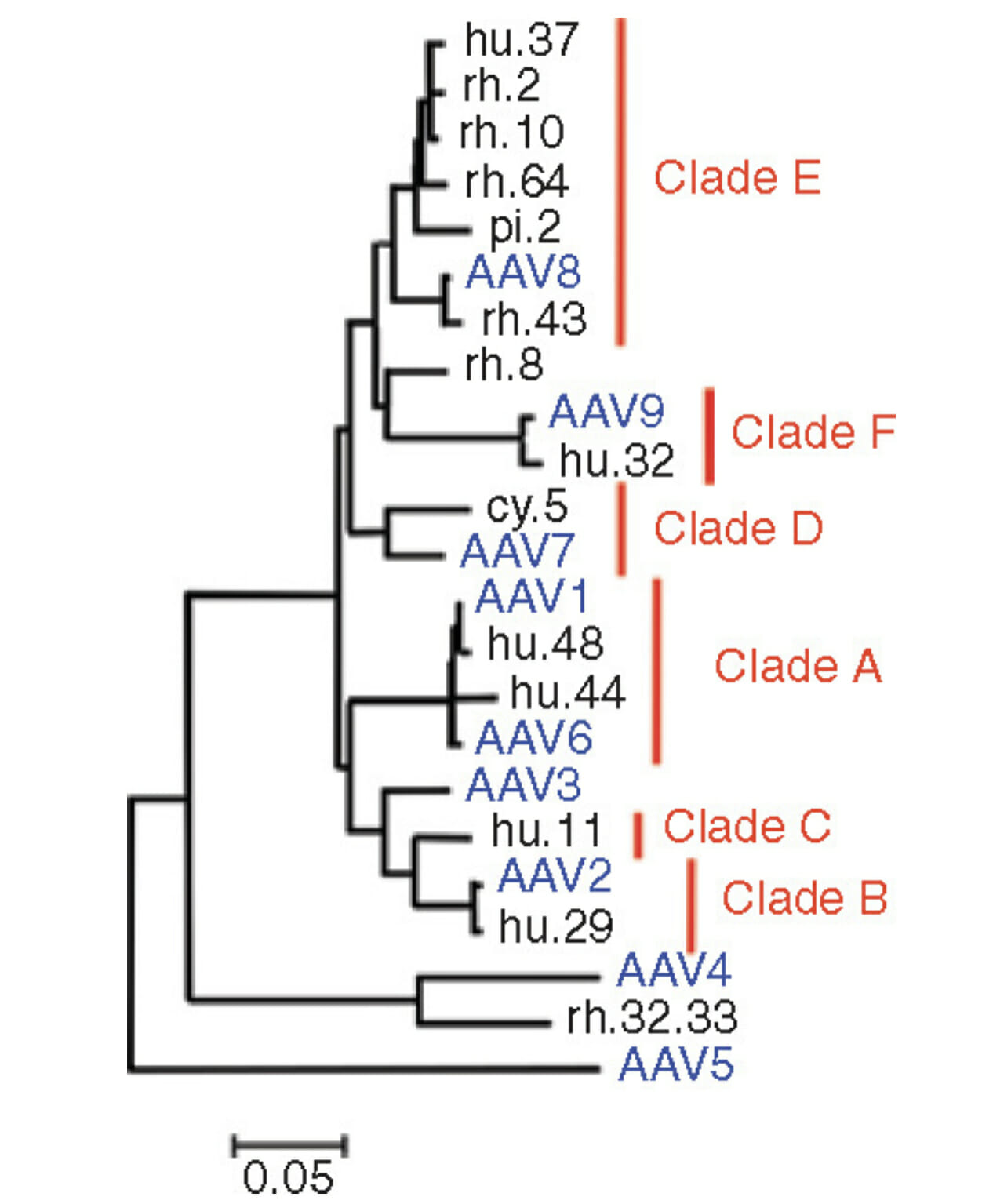
Expanded Repertoire of AAV Vector Serotypes Mediate Unique Patterns of Transduction in Mouse Brain
https://www.sciencedirect.com/science/article/pii/S1525001616320755
編集履歴
2020/11/04 Mr.Harikiri 2021/02/08 文言整備 2021/02/23 追記 (「はじめに」を追加し、工業化の課題について言及)


